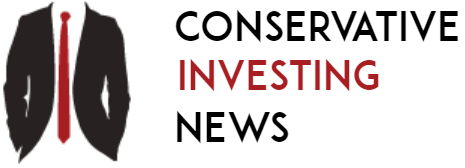The U.S. economy grew at an annualized 2.8 percent pace in the third quarter, driven by strong consumer spending and rising exports, according to revised data released by the Commerce Department.
Though slightly slower than the previous quarter’s 3 percent growth, the report highlights the economy’s gradual fight against inflationary pressures.
Consumer spending surged at a 3.5 percent annual rate last quarter, marking its fastest pace since late 2023. The uptick was led by increased spending at bars, restaurants and auto dealers.
“The moderation in the pace of price growth is allowing consumers to ratchet up spending,” Tim Quinlan, an economist at Wells Fargo, told the Associated Press last month.
Shoppers look for bargains at a Target store in Chicago on November 26 ahead of Black Friday. Consumer spending in the U.S. increased by 3.5 percent in the third quarter, marking the fastest growth since late 2023.
KAMIL KRZACZYNSKI/AFP via Getty Images
U.S. Inflation Continues to Cool
Retail sales rose 0.4 percent in October, a solid gain marking steady momentum heading into the holiday shopping season, especially Black Friday.
Exports grew by 7.5 percent in the third quarter, their highest in two years, contributing significantly to overall growth.
However, business investment lagged, with declines in housing and nonresidential buildings offsetting robust spending on equipment.
While inflation has cooled significantly from its June 2022 peak of 9.1 percent, prices remain about 20 percent higher than they were in early 2021, straining household budgets.
The Federal Reserve‘s preferred inflation gauge, the personal consumption expenditures (PCE) index, rose at an annualized rate of just 1.5 percent last quarter, down from 2.5 percent in the second quarter.
Core PCE inflation, which excludes food and energy prices, slowed to 2.1 percent.
Federal Reserve Chair Jerome Powell departs after speaking during a news conference following the Federal Open Market Committee meeting at William McChesney Martin Jr. Federal Reserve Board Building in Washington on November 7. The Federal Reserve cut interest rates in September and November, with expectations of another cut in December to support economic growth.
ANDREW CABALLERO-REYNOLDS/AFP via Getty Images
Fewer Americans Expect a Recession
For many Americans, the weight of high prices is still keenly felt.
“Everything is high––the meat, the cheese,” said Lorraine Thompson, a shopper in Secaucus, New Jersey. Thompson has shifted to buying less cheese and shopping more at Walmart to save money.
Despite the challenges, confidence in the economy remains steady. The nonprofit think tank Conference Board’s consumer confidence index saw its largest monthly gain since 2021, with fewer Americans expecting a recession in the next 12 months.
Retailers also predict steady holiday spending, with the National Retail Federation forecasting a 2.5 percent to 3.5 percent increase in November and December sales compared to last year.
In this photo illustration, U.K. newspaper front pages display stories on the reelection of former U.S. President Donald Trump on November 7 in London. Trump plans to implement tariffs on imports from China, Mexico and Canada, which economists warn could increase inflation.
Leon Neal/Getty Images
Donald Trump’s Economic Plan
President-elect Donald Trump, who reclaimed the White House earlier this month, will inherit an economy that is broadly stable. He will be supported by Republican majorities in the House and Senate.
Unemployment sits at 4.1 percent, and inflation, while above the Federal Reserve’s 2 percent target, is trending downward.
Trump has pledged sweeping economic changes, including imposing tariffs on goods from China, Mexico and Canada, a move critics warn could stoke inflation.
“Everything we see suggests the consumer feels like they want to be out spending,” Michael Linford, buy-now, pay-later company Affirm’s chief operating officer.
The Federal Reserve, satisfied with inflation progress, cut interest rates twice in recent months and is expected to reduce them again in December. Meanwhile, the Commerce Department plans to release its final GDP estimate for the third quarter on December 19.
This article includes reporting from The Associated Press.
